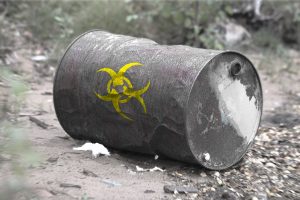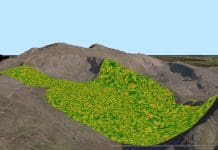With the the Environment Agency’s updated Land Contamination guidance document, Argyll Environmental discuss the new guidance and it’s benefits
 Argyll Environmental, the environmental risk management consultancy, has welcomed the Environment Agency’s (EA) updated Land Contamination guidance: Risk Management (LCRM) guidance document, which overrides the existing CLR11 publication. The new user-friendly guidance provides a more intuitive approach to the management of land contamination, making it easier for landowners, developers and planners to determine next steps.
Argyll Environmental, the environmental risk management consultancy, has welcomed the Environment Agency’s (EA) updated Land Contamination guidance: Risk Management (LCRM) guidance document, which overrides the existing CLR11 publication. The new user-friendly guidance provides a more intuitive approach to the management of land contamination, making it easier for landowners, developers and planners to determine next steps.
The EA has published the new guidance document to replace the CLR11, which was first published in 2004 as a research document. It provided a technical framework for applying risk management processes for land contamination, meeting the criteria of the British Standards (BS) 10175 (2011).
In its place, the LCRM guidance has been designed to be accessible for both experienced and first time users and includes a helpful list of basic site details and general information required for all risk assessment reports. In addition, it contains useful links to relevant guidance via the CL:aire Water and Land Library, as well as links to British Standards and CIEH/LQM guidance documentation.
Chris Loaring, MD of Argyll Environmental said: “Although the purpose and principles of the framework remains the same, the new LCRM document is a user-friendly guide that has been aimed at anyone that may need to manage or deal with land contamination, including landowners, developers, planners and regulators.
“It offers a far more intuitive approach to the management of land contamination and includes up-to-date terminology to advise users on how to assess if there’s unacceptable risk, decide which options are the most suitable to manage the risk and implement remediation if needed.”
The main amendments of the report include a shorter and simplified remediation strategy that focuses on three stages similar to the CLR11 document. Stage 1 focuses on risk assessment, stage 2 options appraisal and stage 3 remediation and verification.
The remediation process has been improved with the main emphasis being on a single remediation strategy. The new LCRM includes a matrix to determine which remediation options are most appropriate and presents options depending on what contaminants are found within the soil or water.
The new guidance is now available online and the EA are currently seeking feedback on the technical content, structure and options appraisal applicability matrix over the next six months, which Argyll are glad to be a part of.
For more information regarding Argyll Environmental and its range of environmental consultancy services, planning services, risk assessments and training, visit www.argyllenvironmental.co.uk or call 0845 458 5250.













